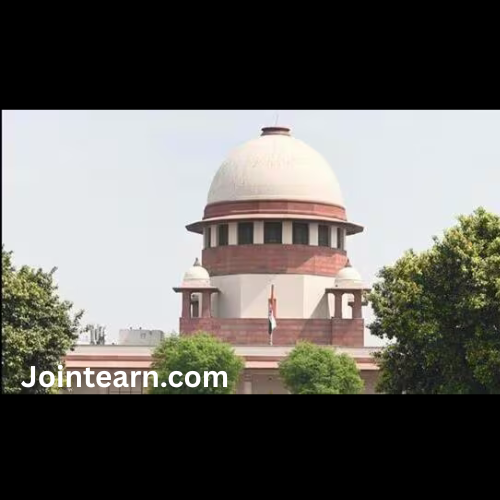Updated on: November 12, 2025 | 11:11 PM IST
PATNA: The 2025 Bihar Assembly elections have produced a set of exit poll results that have captured the attention of political analysts and the general public alike, presenting an intriguing scenario. While the National Democratic Alliance (NDA) appears poised to retain power in the state according to a majority of the surveys, a noteworthy twist emerges when voters are asked about their preferred Chief Minister. Across multiple pollsters, the Rashtriya Janata Dal (RJD) leader Tejashwi Yadav is emerging as the candidate with higher approval ratings compared to incumbent Chief Minister Nitish Kumar, signaling an unusual divergence between party preference and leadership choice among the electorate.
Exit Poll Projections: NDA Leading
As per the predictions released on Wednesday by several prominent polling agencies, the BJP-JD(U) alliance is projected to secure a comfortable majority in the 243-member Bihar Assembly, continuing its political dominance in the state. Chanakya, one of the leading pollsters, has estimated that the NDA could win between 121 and 141 seats, while Axis My India suggests a slightly higher range of 160 seats, with a margin of error of ±12 seats. These projections reflect the consolidation of NDA’s traditional support base and the effectiveness of its electoral machinery.
Other surveys, including Peoples Pulse, have given the NDA an even stronger showing, with projections ranging from 133 to 159 seats, suggesting that the ruling alliance could secure not only a simple majority but potentially an enhanced mandate. The consistent prediction across most exit polls indicates that the NDA, comprising the Bharatiya Janata Party (BJP) and Janata Dal (United), remains the preferred political force in Bihar in terms of seat count, thereby reinforcing its position as the likely winner of the assembly elections.
Mahagathbandhan: Seat Share vs Leadership Preference
The opposition alliance, led by the RJD under Tejashwi Yadav, appears to have limited prospects in terms of seat count, although the polls indicate that the party retains significant public approval on a personal level for its leadership. According to Axis My India, the Mahagathbandhan is projected to win between 98 and 118 seats, while Peoples Pulsesuggests a narrower range of 75 to 101 seats. While these numbers fall short of a majority, they highlight a resilient voter base for the RJD-led alliance, particularly in certain strongholds and constituencies where the party has historically performed well.
However, the most striking revelation from the exit polls is the preference of voters for Tejashwi Yadav as Chief Minister, even among those who may be voting for NDA candidates. According to Axis My India, Tejashwi secured 34% approval as the preferred Chief Minister, surpassing Nitish Kumar, who came second at 22%, and any candidate from the BJP, who received 14%. Similarly, the Peoples Pulse survey indicates that Tejashwi led with 32% preference, narrowly ahead of Nitish at 30%. This pattern suggests a notable distinction in voter behavior: while the NDA may be the choice for legislative representation, the electorate seems to express greater confidence in Tejashwi’s leadership for the top post.
Understanding the Voter Sentiment
Political analysts describe this divergence between party preference and leadership choice as a complex expression of voter sentiment, reflecting both trust in governance and aspirational leadership. Analysts suggest that while voters may perceive the NDA as capable of delivering stability and continuity in governance, they simultaneously view Tejashwi Yadav as a dynamic and youthful leader capable of injecting energy into Bihar’s administration.
The exit polls indicate that voters are weighing leadership qualities separately from party ideology, a trend that has become increasingly evident in recent elections across India. This could have implications for post-election politics, especially if the NDA faces unexpected seat losses in certain constituencies or if there is a need to negotiate coalition arrangements. The approval of Tejashwi as a preferred CM may embolden the Mahagathbandhan in asserting its relevance despite a projected loss in overall seat count.
Jan Suraaj Party’s Limited Impact
Another notable aspect of the 2025 Bihar elections is the underwhelming performance of the Jan Suraaj Party, led by Prashant Kishor, a former political strategist known for his role in several successful election campaigns across India. Despite raising important issues and generating significant media attention, the party is projected to secure between zero and five seats according to exit polls, suggesting that it has struggled to convert public attention into tangible electoral support.
The poor performance of Jan Suraaj Party indicates that while new entrants can influence political discourse, breaking into a well-entrenched political landscape like Bihar’s assembly politics remains challenging. The results reflect the difficulty of translating strategic campaign messaging and issue-based politics into concrete electoral gains, especially when competing against alliances with deep organizational networks like the NDA and Mahagathbandhan.
Election Phases and Result Timeline
Voting for the two-phase Bihar Assembly elections concluded on November 6 and 11, covering all constituencies in the state. The results are scheduled to be announced on November 14, 2025, and until then, the exit poll data serves as an indicator of trends rather than a definitive prediction. Historically, Bihar has witnessed variations between exit poll projections and actual results, emphasizing that final outcomes may be influenced by voter turnout, last-minute swings, and regional factors.
Political Implications
The exit poll projections, if reflective of actual results, carry multiple implications for Bihar’s political landscape:
- NDA’s Mandate: The projected majority ensures that the BJP-JD(U) alliance is likely to retain power, consolidating Nitish Kumar’s position as the incumbent CM in terms of party leadership.
- Tejashwi’s Popularity: Despite the NDA’s lead, Tejashwi’s approval as the preferred Chief Minister could enhance his political capital within the RJD and among the electorate, shaping the opposition’s strategies going forward.
- Coalition Dynamics: In the event of a hung assembly or close contest, the Mahagathbandhan may leverage Tejashwi’s popularity in negotiations or influence legislative priorities, potentially impacting governance even if the NDA forms the government.
- Future Leadership Trends: The voter preference for leadership distinct from party choice may signal a broader trend in Indian politics, where personal credibility and charisma increasingly influence electoral behavior.
- Challenges for New Entrants: The limited impact of the Jan Suraaj Party underscores the difficulties faced by new political entities in breaking through established voter loyalties, even when guided by experienced strategists like Prashant Kishor.
Conclusion
The 2025 Bihar exit polls present a complex electoral narrative. On the one hand, the NDA appears poised for a comfortable victory in terms of seat count, signaling continuity and consolidation of its political base. On the other, the strong approval ratings for Tejashwi Yadav as the preferred Chief Minister reflect a desire among voters for energetic and youthful leadership, even among those supporting the ruling alliance.
As Bihar awaits the official announcement of results on November 14, political observers, analysts, and parties alike will be closely examining not only which alliance secures power but also the subtle undercurrents of voter sentiment that may shape governance, alliances, and leadership perceptions in the state for years to come.
The election thus represents a dual narrative: the continuity of the NDA’s political dominance and the emergence of Tejashwi Yadav as a popular leadership choice, a combination that may influence both policy debates and political strategies in Bihar in the coming term.


Leave a Reply